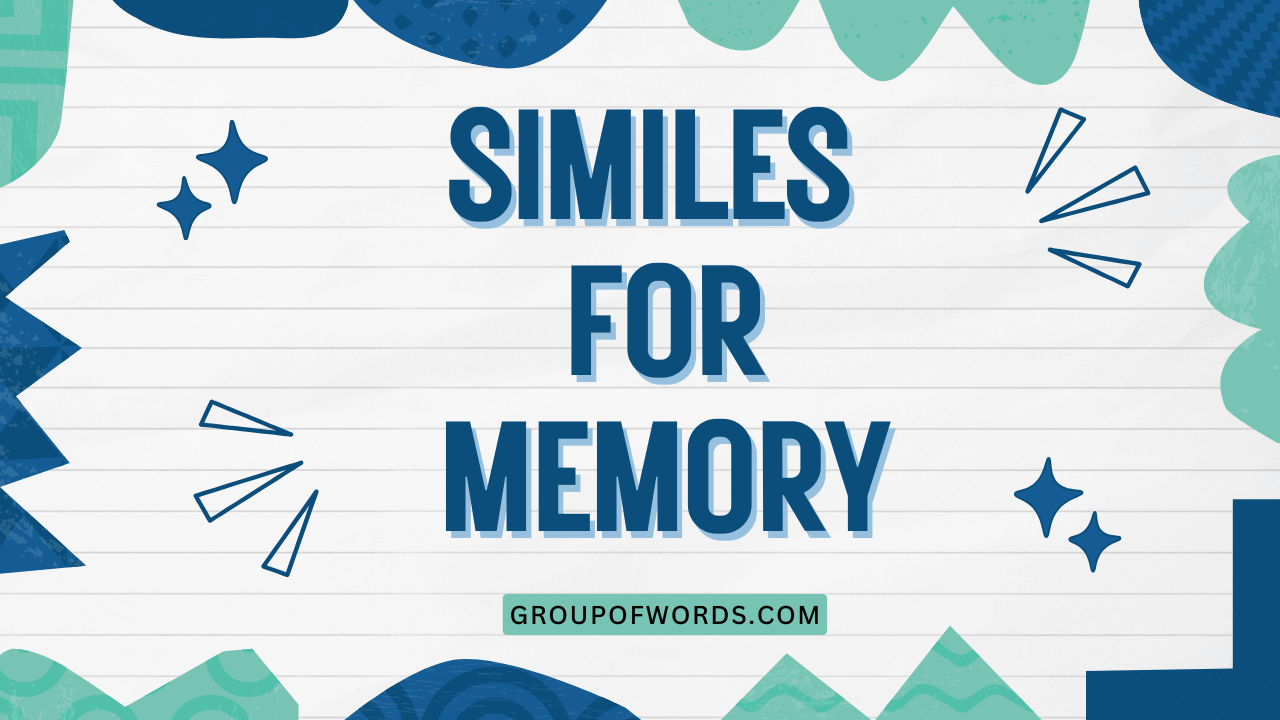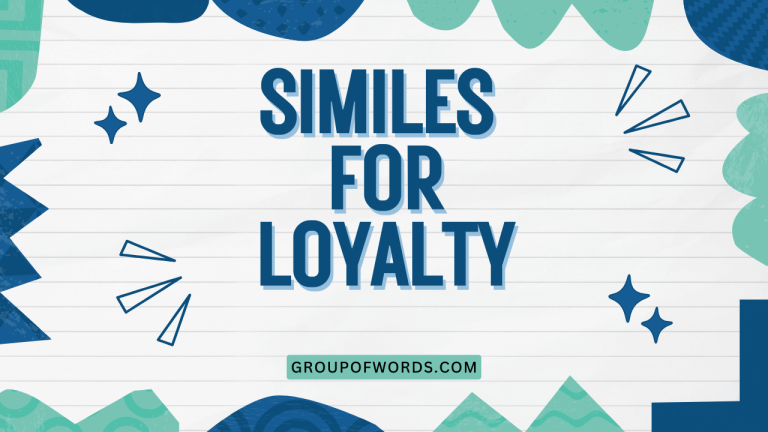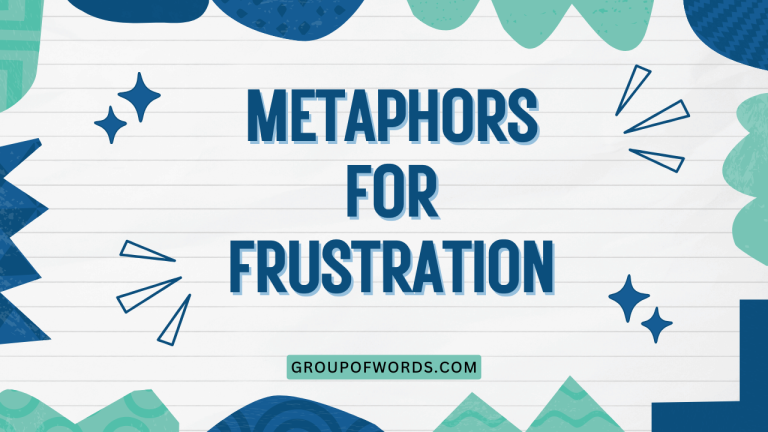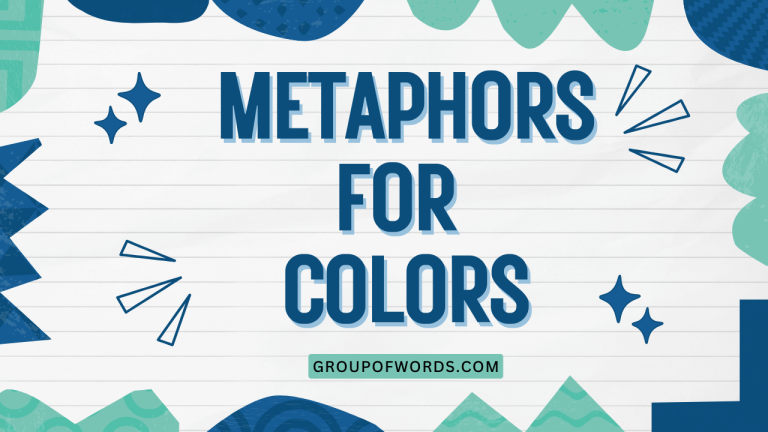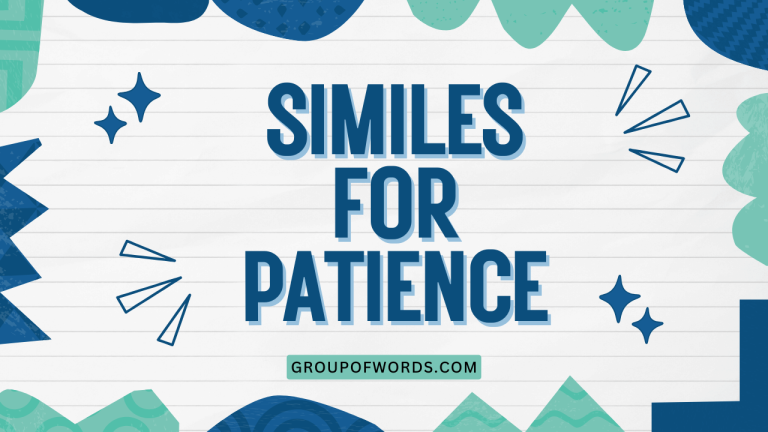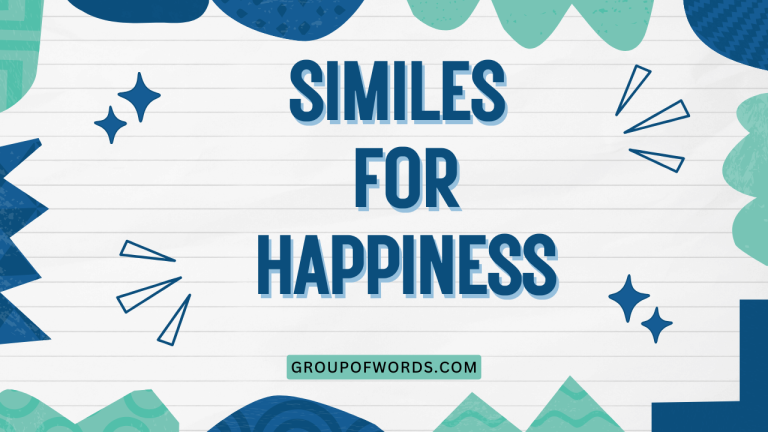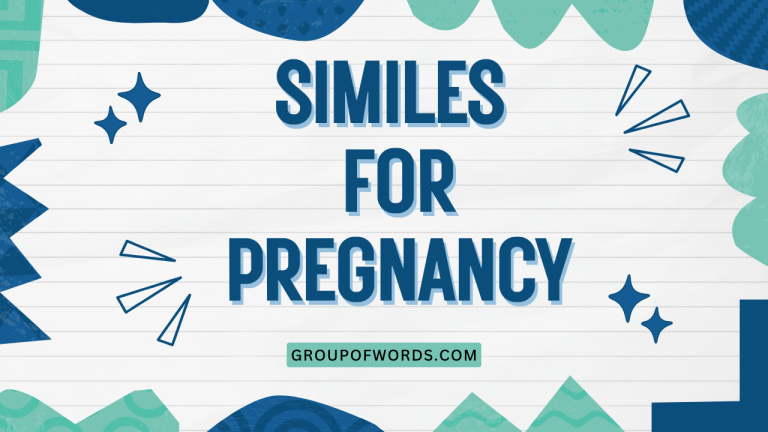Similes for Memory: Enhancing Recall Through Figurative Language
Understanding how to use similes to describe memory can significantly enhance your English vocabulary and expressive abilities. Similes provide vivid and relatable comparisons, making abstract concepts like memory more accessible and understandable.
This article offers a comprehensive guide to using similes for memory, exploring their structure, types, and applications, along with common mistakes to avoid. Whether you’re a student, writer, or language enthusiast, this guide will equip you with the knowledge and skills to effectively use similes to enrich your descriptions of memory.
Table of Contents
- Introduction
- Definition of Similes for Memory
- Structural Breakdown of Similes
- Types of Similes Describing Memory
- Examples of Similes for Memory
- Usage Rules for Similes
- Common Mistakes When Using Similes
- Practice Exercises
- Advanced Topics: Nuances in Simile Usage
- Frequently Asked Questions
- Conclusion
Introduction
Memory, an intricate cognitive function, often defies simple description. Similes, with their ability to draw parallels between disparate concepts, offer a powerful tool to articulate the elusive nature of memory.
By comparing memory to familiar objects, sensations, or experiences, we can create vivid and relatable imagery that enhances understanding and engagement. This article delves into the art of crafting similes for memory, providing a structured approach to mastering this figurative language technique.
Whether you aim to improve your writing, enhance your communication, or simply deepen your appreciation for the English language, this guide will equip you with the necessary knowledge and skills.
Definition of Similes for Memory
A simile is a figure of speech that compares two unlike things using “like” or “as.” When applied to memory, similes help us describe its qualities, functions, or failures in a more imaginative and relatable way. They transform abstract concepts into concrete images, making them easier to grasp. For instance, saying “His memory was like a steel trap” conveys the idea of a sharp, reliable memory using a familiar image.
The function of a simile is to create a vivid comparison that enhances understanding and evokes a particular feeling or image in the reader’s mind. Similes are used in various contexts, including literature, poetry, everyday conversation, and academic writing, to add depth and color to descriptions.
Structural Breakdown of Similes
Similes typically consist of three key components:
- The Subject: The thing being described (in this case, memory or an aspect of memory).
- The Linking Word: “Like” or “as,” which establishes the comparison.
- The Object of Comparison: The thing to which the subject is being compared.
The basic structure is: Subject + Linking Word + Object of Comparison. For example:
- Her memory (Subject) + is like (Linking Word) + a sieve (Object of Comparison).
- His memory (Subject) + is as sharp as (Linking Word) + a tack (Object of Comparison).
Understanding this basic structure is crucial for creating effective and grammatically correct similes. You can vary the structure slightly for stylistic effect, but the core elements should always be present.
Types of Similes Describing Memory
Similes can be used to describe various aspects and qualities of memory. Here are some common categories:
Clarity and Accuracy
These similes describe how clear and precise someone’s memory is.
Strength and Retention
These similes focus on the ability of the memory to hold information and recall it later.
Fragility and Fading
These similes highlight the ephemeral nature of memory and its tendency to weaken over time.
Selectivity and Specificity
These similes describe how memory can be selective, focusing on certain details while omitting others.
Emotional Impact
These similes capture the emotional weight and significance of certain memories.
Examples of Similes for Memory
The following tables provide extensive examples of similes used to describe different aspects of memory. Each table focuses on a specific category, offering a range of options for expressing various nuances.
Clarity and Accuracy Examples
This table presents examples of similes that highlight the clarity and accuracy of memory.
| Simile | Explanation |
|---|---|
| His memory was like a photograph. | Describes a memory that is incredibly detailed and accurate. |
| Her memory was as clear as crystal. | Indicates a memory that is easy to see and understand. |
| His recollection was like a perfectly preserved artifact. | Suggests a memory that remains intact and unchanged over time. |
| Her memory was as sharp as a tack. | Indicates a memory that is precise and accurate. |
| His memory was like a well-organized filing cabinet. | Describes a memory that is easy to access and retrieve. |
| Her memory was as vivid as a dream. | Suggests a memory that is full of color and detail. |
| His memory was like a digital recording. | Describes a memory that captures every detail without distortion. |
| Her memory was as precise as a surgeon’s cut. | Indicates a memory that is extremely accurate and exact. |
| His memory was like a perfectly tuned instrument. | Describes a memory that functions flawlessly and accurately. |
| Her memory was as lucid as a mountain stream. | Suggests a memory that is clear, pure, and easy to understand. |
| His memory was like an encyclopedia. | Describes a memory that holds a vast amount of information. |
| Her memory was as comprehensive as a legal document. | Indicates a memory that covers all aspects of a situation. |
| His memory was like a high-resolution image. | Describes a memory that is sharp and detailed. |
| Her memory was as true as a compass. | Suggests a memory that is reliable and accurate. |
| His memory was like a flawless mirror. | Describes a memory that reflects events exactly as they happened. |
| Her memory was as distinct as a fingerprint. | Indicates a memory that is unique and easily identifiable. |
| His memory was like a blueprint. | Describes a memory that provides a clear and detailed plan of events. |
| Her memory was as explicit as a written contract. | Suggests a memory that is clear, detailed, and leaves no room for misinterpretation. |
| His memory was like a perfectly calibrated scale. | Describes a memory that accurately measures and recalls details. |
| Her memory was as defined as a sharp outline. | Indicates a memory that is clear and well-defined. |
| His memory was like a crystal ball. | Describes a memory that allows one to see past events clearly. |
| Her memory was as exact as a mathematical equation. | Indicates a memory that is precise and without error. |
| His memory was like a fine-tuned machine. | Describes a memory that works with perfect precision. |
| Her memory was as faithful as a loyal friend. | Indicates a memory that is reliable and trustworthy. |
| His memory was like a precise clock. | Describes a memory that accurately tracks and recalls events. |
| Her memory was as accurate as a scientific instrument. | Indicates a memory that provides exact and reliable information. |
Strength and Retention Examples
This table provides similes that emphasize the strength and retention capabilities of memory.
| Simile | Explanation |
|---|---|
| His memory was like an elephant’s. | Describes a memory that is exceptionally long and never forgets. |
| Her memory was as strong as steel. | Indicates a memory that is resilient and resistant to fading. |
| His memory was like a fortress. | Suggests a memory that is well-protected and secure. |
| Her memory was as durable as stone. | Indicates a memory that lasts for a very long time. |
| His memory was like a deeply etched inscription. | Describes a memory that is firmly imprinted and difficult to erase. |
| Her memory was as persistent as a recurring dream. | Suggests a memory that keeps coming back despite efforts to forget. |
| His memory was like a permanent record. | Describes a memory that is indelible and unchanging. |
| Her memory was as steadfast as an anchor. | Indicates a memory that remains firm and unwavering. |
| His memory was like a vault. | Describes a memory that securely stores information. |
| Her memory was as unyielding as granite. | Suggests a memory that is resistant to change or distortion. |
| His memory was like a library. | Describes a memory that holds a vast collection of information. |
| Her memory was as resilient as rubber. | Indicates a memory that can bounce back from trauma or stress. |
| His memory was like a time capsule. | Describes a memory that preserves the past intact. |
| Her memory was as solid as a rock. | Suggests a memory that is dependable and unwavering. |
| His memory was like a long-playing record. | Describes a memory that can be replayed repeatedly without losing quality. |
| Her memory was as tenacious as ivy. | Indicates a memory that clings tightly and is hard to remove. |
| His memory was like a deeply rooted tree. | Describes a memory that is firmly established and resilient. |
| Her memory was as constant as the North Star. | Suggests a memory that provides a reliable point of reference. |
| His memory was like a steel trap. | Describes a memory that quickly captures and retains information. |
| Her memory was as enduring as a monument. | Indicates a memory that is likely to last for generations. |
| His memory was like a well-preserved manuscript. | Describes a memory that has been carefully maintained and protected. |
| Her memory was as immutable as the laws of physics. | Suggests a memory that cannot be changed or altered. |
| His memory was like a digital backup. | Describes a memory that provides a secure copy of past events. |
| Her memory was as robust as an ancient tree. | Indicates a memory that is strong and healthy. |
| His memory was like an unshakeable foundation. | Describes a memory that is solid and dependable. |
| Her memory was as resistant as a shielded cable. | Suggests a memory that is protected from interference or corruption. |
Fragility and Fading Examples
This table contains similes that depict the fragility and fading nature of memory.
| Simile | Explanation |
|---|---|
| His memory was like a fading photograph. | Describes a memory that is losing its clarity and detail over time. |
| Her memory was as fragile as glass. | Indicates a memory that is easily broken or lost. |
| His memory was like a dream slipping away. | Suggests a memory that is gradually disappearing from consciousness. |
| Her memory was as ephemeral as a cloud. | Indicates a memory that is fleeting and transient. |
| His memory was like a whisper in the wind. | Describes a memory that is faint and difficult to hear. |
| Her memory was as delicate as a butterfly’s wing. | Suggests a memory that is easily damaged or destroyed. |
| His memory was like a sandcastle washed by the tide. | Describes a memory that is being gradually eroded away. |
| Her memory was as transient as a shooting star. | Indicates a memory that appears briefly and then vanishes. |
| His memory was like a worn-out tape. | Describes a memory that has become distorted and unreliable through repeated use. |
| Her memory was as faint as a distant echo. | Suggests a memory that is barely audible or discernible. |
| His memory was like a melting ice cube. | Describes a memory that is gradually disappearing. |
| Her memory was as vulnerable as a newborn. | Indicates a memory that is easily influenced or corrupted. |
| His memory was like a page torn from a book. | Describes a memory that is incomplete and fragmented. |
| Her memory was as elusive as a shadow. | Suggests a memory that is difficult to catch or grasp. |
| His memory was like a scratched record. | Describes a memory that skips and repeats due to damage. |
| Her memory was as brittle as dry leaves. | Indicates a memory that is easily broken or crumbled. |
| His memory was like a dying ember. | Describes a memory that is slowly fading away. |
| Her memory was as fleeting as a hummingbird’s visit. | Suggests a memory that is brief and quickly forgotten. |
| His memory was like a rusted lock. | Describes a memory that is difficult to open or access. |
| Her memory was as fragile as spun sugar. | Indicates a memory that is easily shattered or dissolved. |
| His memory was like a half-remembered song. | Describes a memory that is incomplete and fragmented. |
| Her memory was as pale as moonlight. | Suggests a memory that lacks vibrancy and detail. |
| His memory was like a cracked vase. | Describes a memory that is damaged and leaking information. |
| Her memory was as delicate as lace. | Indicates a memory that is easily torn or damaged. |
| His memory was like a forgotten language. | Describes a memory that is lost and difficult to retrieve. |
| Her memory was as insubstantial as smoke. | Suggests a memory that lacks substance and is easily dissipated. |
Selectivity and Specificity Examples
This table showcases similes that illustrate the selective and specific nature of memory.
| Simile | Explanation |
|---|---|
| His memory was like a spotlight, focusing on certain details. | Describes a memory that highlights specific aspects while leaving others in darkness. |
| Her memory was as selective as a painter’s eye. | Indicates a memory that chooses certain details to emphasize. |
| His memory was like a filter, only letting certain information through. | Suggests a memory that screens out unwanted or irrelevant details. |
| Her memory was as precise as a laser beam. | Indicates a memory that focuses on a very specific point. |
| His memory was like a puzzle, with only some pieces fitting. | Describes a memory that is incomplete and fragmented. |
| Her memory was as targeted as an arrow. | Suggests a memory that is aimed at a specific detail or event. |
| His memory was like a custom-built database, storing only essential data. | Describes a memory that stores only relevant and necessary information. |
| Her memory was as curated as a museum exhibit. | Suggests a memory that carefully selects and presents specific items. |
| His memory was like a biased historian, favoring certain perspectives. | Describes a memory that is influenced by personal beliefs and preferences. |
| Her memory was as edited as a published book. | Suggests a memory that has been refined and altered for clarity and impact. |
| His memory was like a magnifying glass, enlarging certain aspects. | Describes a memory that emphasizes specific details while minimizing others. |
| Her memory was as particular as a gourmet chef. | Suggests a memory that focuses on specific flavors and ingredients. |
| His memory was like a selective archive, preserving only significant moments. | Describes a memory that stores only important and meaningful events. |
| Her memory was as discriminating as a wine connoisseur. | Suggests a memory that distinguishes between subtle differences. |
| His memory was like a tailor-made suit, fitting only certain events. | Describes a memory that is specific to particular situations. |
| Her memory was as refined as a precious gem. | Suggests a memory that has been carefully polished and perfected. |
| His memory was like a custom-tuned radio, picking up only certain frequencies. | Describes a memory that focuses on specific types of information. |
| Her memory was as detailed as a microphotograph. | Suggests a memory that captures minute details. |
| His memory was like a specialized tool, designed for specific tasks. | Describes a memory that is optimized for particular purposes. |
| Her memory was as nuanced as a complex musical score. | Suggests a memory that captures subtle variations and details. |
| His memory was like a precision instrument, calibrated for specific measurements. | Describes a memory that provides accurate and precise information. |
| Her memory was as acute as an eagle’s eye. | Suggests a memory that can spot specific details from a distance. |
| His memory was like a well-indexed catalog, efficiently retrieving specific entries. | Describes a memory that quickly locates and recalls specific information. |
| Her memory was as focused as a telephoto lens. | Suggests a memory that zooms in on specific details. |
| His memory was like a meticulously annotated map, highlighting specific landmarks. | Describes a memory that emphasizes important features and details. |
Usage Rules for Similes
To use similes effectively, follow these rules:
- Ensure a Clear Comparison: The two things being compared should have a recognizable similarity. The comparison should make sense to the reader.
- Use “Like” or “As”: These are the standard linking words for similes. Using other words may create a metaphor instead.
- Avoid Clichés: Try to avoid overused similes (e.g., “as red as a rose”). Strive for originality to make your writing more engaging.
- Maintain Consistency: The comparison should be consistent with the overall tone and style of your writing.
- Be Concise: Similes should be brief and to the point. Avoid overly complex comparisons that can confuse the reader.
Exceptions: While “like” and “as” are most common, you can occasionally use variations like “similar to” or “resembles” for stylistic effect, but ensure the comparison remains clear.
Common Mistakes When Using Similes
Here are some common mistakes to avoid when using similes:
| Mistake | Incorrect Example | Correct Example |
|---|---|---|
| Unclear Comparison | His memory was like a car. | His memory was like a well-maintained engine, always ready to start. |
| Using Metaphors Instead | His memory was a steel trap. | His memory was like a steel trap. |
| Using Clichés | His memory was as good as gold. | His memory was as valuable as a priceless artifact. |
| Inconsistent Tone | His memory was like a nuclear bomb; it was also pretty good. | His memory was like a nuclear bomb, powerful and capable of recalling vast amounts of information. |
| Overly Complex Comparison | His memory was like the intricate workings of a Swiss watch, with each gear and spring representing a different aspect of his past, meticulously aligned and perfectly synchronized to recall events with unparalleled precision. | His memory was like a Swiss watch, precise and intricate. |
Practice Exercises
Test your understanding of similes for memory with these exercises.
Exercise 1: Fill in the Blanks
Complete the following sentences with appropriate similes.
| Question | Answer |
|---|---|
| 1. Her memory of the event was _______________. | like a vivid dream. |
| 2. His memory was _______________, never forgetting a face. | as sharp as a tack |
| 3. The details of the story were _______________ in his mind. | like a fading photograph |
| 4. Her memory was _______________, focusing on the smallest details. | as selective as a painter’s eye |
| 5. His childhood memories were _______________. | like a treasure chest |
| 6. Her memory was _______________, easily influenced by suggestion. | as fragile as glass |
| 7. His memory of the song was _______________. | like a half-remembered tune |
| 8. Her memory was _______________, storing only the most important facts. | as efficient as a computer |
| 9. His memory of the incident was _______________. | like a recurring nightmare |
| 10. Her memory was _______________, resistant to distortion. | as strong as steel |
Exercise 2: Identify the Error
Identify and correct the error in each simile.
| Question | Answer |
|---|---|
| 1. His memory was a fortress. | Error: This is a metaphor. Correct: His memory was like a fortress. |
| 2. Her memory was gold. | Error: Unclear comparison. Correct: Her memory was as valuable as gold. |
| 3. His memory was like a car that was good. | Error: Unclear comparison. Correct: His memory was like a well-oiled machine. |
| 4. Her memory was like a broken glass. | Error: Grammatical error. Correct: Her memory was as fragile as glass. |
| 5. His memory was a fading photograph like. | Error: Incorrect word order. Correct: His memory was like a fading photograph. |
| 6. Her memory was selective, painter’s eye as. | Error: Incorrect word order. Correct: Her memory was as selective as a painter’s eye. |
| 7. His memory was like a chest. | Error: Unclear comparison. Correct: His childhood memories were like a treasure chest. |
| 8. Her memory was fragile, a glass. | Error: Missing linking word. Correct: Her memory was as fragile as glass. |
| 9. His memory was a tune. | Error: Unclear comparison. Correct: His memory of the song was like a half-remembered tune. |
| 10. Her memory was efficient. | Error: Missing linking word and object of comparison. Correct: Her memory was as efficient as a computer. |
Exercise 3: Create Your Own Similes
Write your own similes to describe the following aspects of memory:
- The feeling of forgetting something important.
- The clarity of a childhood memory.
- The persistence of a traumatic memory.
- The selectivity of memory when recalling a conversation.
- The fading of a memory over time.
- The sudden return of a long-forgotten memory.
- The unreliability of eyewitness testimony.
- The emotional impact of a memory.
- The act of trying to remember a name.
- The feeling of déjà vu.
Answer: The feeling of forgetting something important is like searching for a key in the dark, knowing it’s there but unable to find it.
Answer: The clarity of a childhood memory is like looking through a perfectly clean window, seeing the past as if it were yesterday.
Answer: The persistence of a traumatic memory is like a broken record, stuck on the same painful groove.
Answer: The selectivity of memory when recalling a conversation is like highlighting only the key points in a long document, focusing on what’s important.
Answer: The fading of a memory over time is like an old inscription on a tombstone, gradually worn away by the elements.
Answer: The sudden return of a long-forgotten memory is like stumbling upon a hidden room in an old house, filled with relics of the past.
Answer: The unreliability of eyewitness testimony is like trying to piece together a shattered vase, never quite able to restore it to its original form.
Answer: The emotional impact of a memory is like the lingering scent of a loved one’s perfume, bringing back a flood of feelings.
Answer: The act of trying to remember a name is like fishing in a vast ocean, hoping to catch the right fish.
Answer: The feeling of déjà vu is like reading a book and realizing you’ve read this page before, even though you can’t remember when.
Advanced Topics: Nuances in Simile Usage
For advanced learners, consider these more complex aspects of simile usage:
- Subtlety: Effective similes are often subtle, requiring the reader to make a connection rather than stating it explicitly.
- Originality: Strive for unique comparisons that haven’t been overused.
- Cultural Context: Be aware of cultural references and ensure they are appropriate for your audience.
- Extended Similes: Develop longer, more detailed comparisons to create a richer image.
Mastering these nuances will elevate your simile usage from basic to sophisticated, adding depth and impact to your writing.
Frequently Asked Questions
- What is the difference between a simile and a metaphor?
A simile compares two things using “like” or “as,” while a metaphor directly equates them without using these words. For example, “His memory was like a steel trap” (simile) versus “His memory was a steel trap” (metaphor).
- Why are similes useful in describing memory?
Similes help make the abstract concept of memory more concrete and relatable by comparing it to familiar objects or experiences. This enhances understanding and creates a more vivid image in the reader’s mind.
- How can I avoid using clichés in my similes?
Strive for originality by thinking beyond common associations. Consider unique qualities of memory and find less obvious comparisons that capture those qualities. Brainstorming and exploring different angles can help.
- Can I use similes in formal writing?
Yes, similes can be used in formal writing, but use them judiciously. Ensure they enhance your argument and are not merely decorative. Avoid overly informal or colloquial comparisons.
- How do I choose the right object of comparison for my simile?
Consider the specific aspect of memory you want to describe. Choose an object of comparison that shares a key characteristic with that aspect. For example, if you want to describe the fragility of memory, compare it to something fragile like glass or a butterfly’s wing.
- What if my simile doesn’t make sense to the reader?
Ensure the comparison is clear and logical. If readers are confused, revise the simile to make the connection more explicit or choose a different object of comparison that is more easily understood.
- How can I make my similes more vivid and engaging?
Use specific and descriptive language. Instead of saying “His memory was like a book,” say “His memory was like a well-worn book, filled with dog-eared pages and faded ink, each telling a story of the past.”
- Are there any cultural considerations when using similes?
Yes, be mindful of cultural references and ensure they are appropriate for your audience. A simile that resonates in one culture might be meaningless or offensive in another. Consider your audience’s background and adjust your comparisons accordingly.
Conclusion
Mastering the art of using similes to describe memory can significantly enhance your communication skills and add depth to your writing. By understanding the structure, types, and usage rules of similes, and by avoiding common mistakes, you can create vivid and engaging comparisons that bring the abstract concept of memory to life.
Remember to strive for originality, clarity, and consistency in your similes, and to be mindful of your audience’s understanding. With practice and attention to detail, you can effectively use similes to enrich your descriptions and express the nuances of memory in a compelling way.
